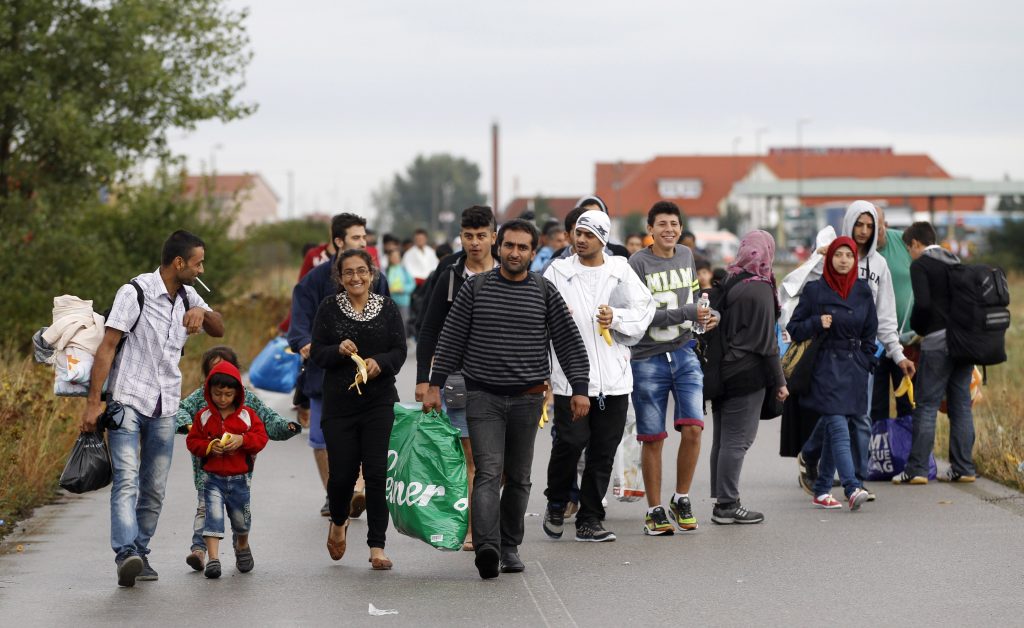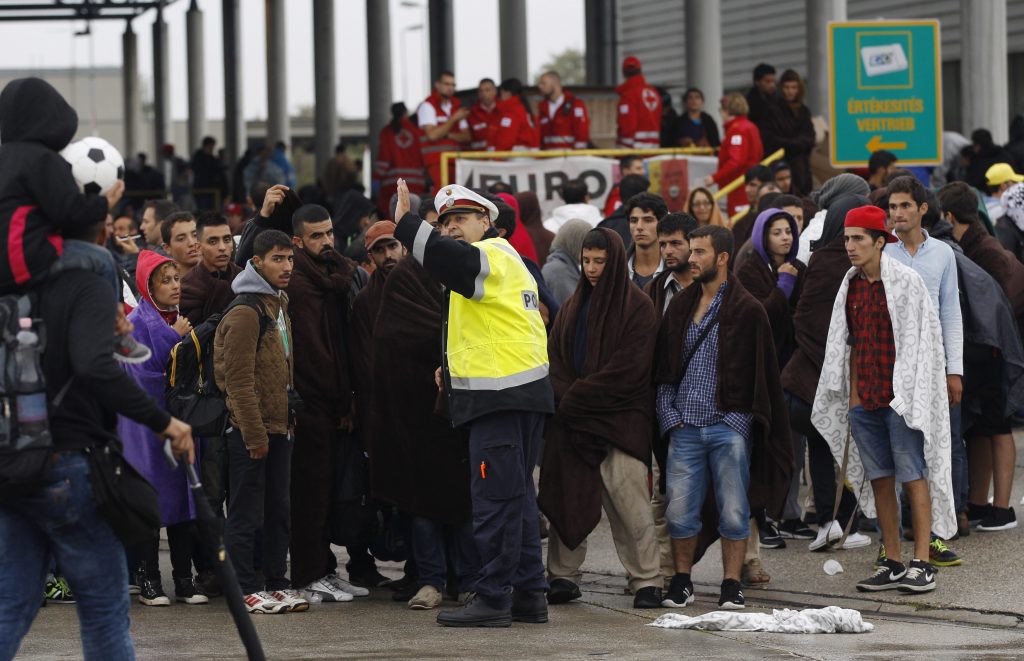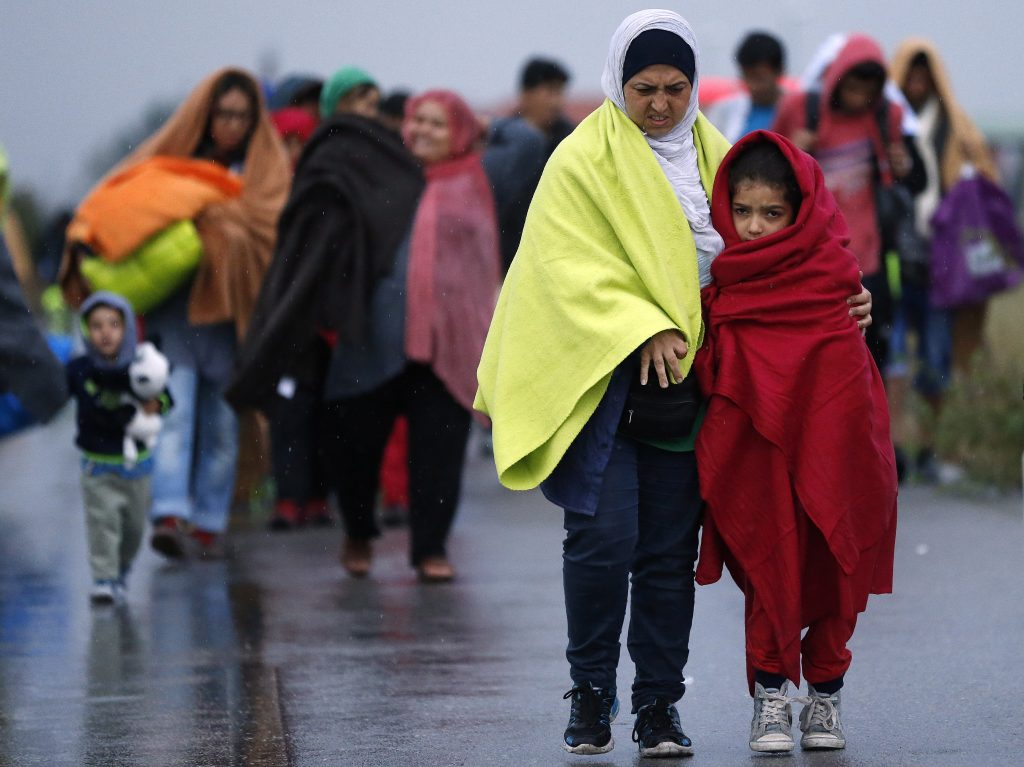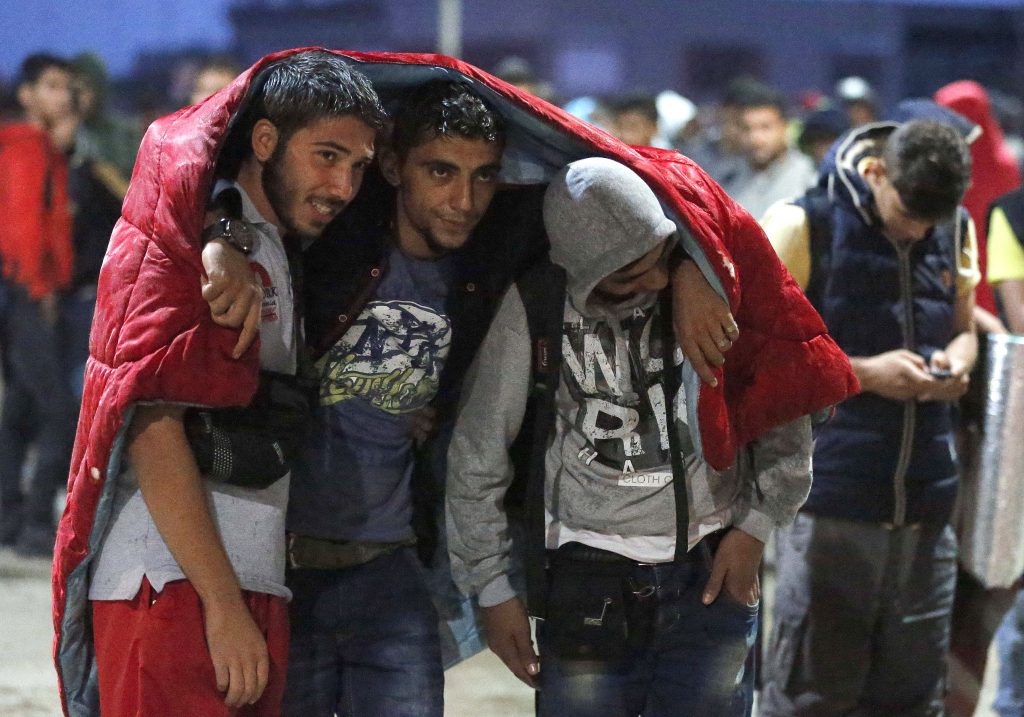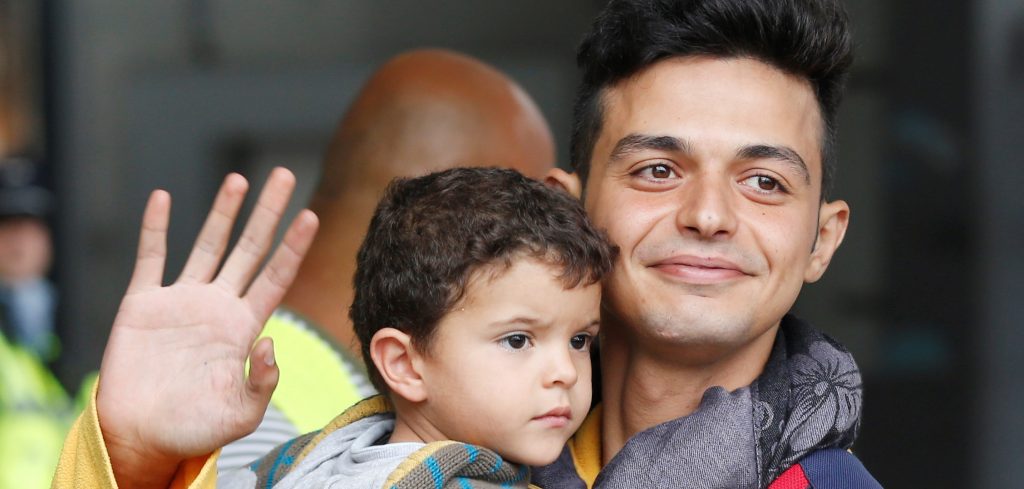La marcia da Budapest all’Austria di richiedenti asilo è un fiume umano, e dopo le tensioni dei giorni scorsi ora l’Ungheria ha messo a disposizione alcuni pullman per il trasporto. E così i primi migranti sono entrati verso Vienna nel cuore della notte. Molti di loro hanno proseguito la loro marcia fino alla Germania, l’altro Paese, assieme appunto all’Austria, ad aver accettato di aprire i propri confini ai profughi ammassati in Ungheria, per dare loro asilo. Nel pomeriggio di sabato centinaia di rifugiati sono arrivati in treno alla stazione di Monaco di Baviera, accolti dagli applausi scroscianti dei tedeschi, molti dei quali ex immigrati, che affollavano la stazione. La folla ha cantato l’Inno alla Gioia e gridato più volte «Germania, Germania». All’arrivo dei migranti un gruppo di signore è scoppiato in lacrime. Hanno spiegato di aver ospitato fino alla scorsa settimana una famiglia di profughi siriani: «Stanno vivendo un dramma epocale».
#MigrantCrisis“Welcome to Germany” – People applaud and greet migrants with gifts as they arrive in Munich#DesperateJourneysLive updates: http://bbc.in/1LQprLQ
Posted by BBC News on Sabato 5 settembre 2015
La decisione di accogliere tutti. Una decisione arrivata nella serata di venerdì, e siglata da un accordo tra il primo ministro ungherese, Viktor Orban, il cancelliere austriaco Werner Faymann e la cancelliera tedesca Angela Merkel. Quest’ultima ha precisato in un’intervista che la Germania è pronta ad accogliere tutti i richiedenti asilo, senza un tetto massimo di persone, perché «il diritto di asilo politico non prevede l’esistenza di un limite al numero dei richiedenti». Ma dal canto suo Orban ha fatto sapere che quella di mettere a disposizione i pullman da parte del governo è stata una misura eccezionale, poiché la marcia a piedi lungo l’autostrada stava creando problemi di ordine pubblico, e nel frattempo il Parlamento di Budapest ha approvato la creazione di zone di transito lungo i confini, annunciando però un inasprimento delle condizioni per concedere asilo.
Il vertice in Lussembrugo. È un’Europa spaccata quella che si è vista ieri. Da una parte i Paesi dell’est che proseguono sulla strada della tolleranza zero, rifiutando ogni proposta sulle quote obbligatorie per l’accoglienza dei migranti. Dall’altra, oltre alla storica decisione di Germania e Austria, il premier britannico Cameron che promette di andare a prendere i profughi siriani ed accoglierli sul suolo inglese. Durante il vertice informale dei ministri degli Esteri in Lussemburgo il gruppo composto da Italia, Francia e Germania ha premuto per «agire in modo decisivo e conforme ai suoi valori», mentre quello formato da Ungheria, Polonia, Repubblica Ceca e Slovacchia è rimasto compatto sul rifiuto delle quote.
GUARDA LA GALLERY (12 foto)
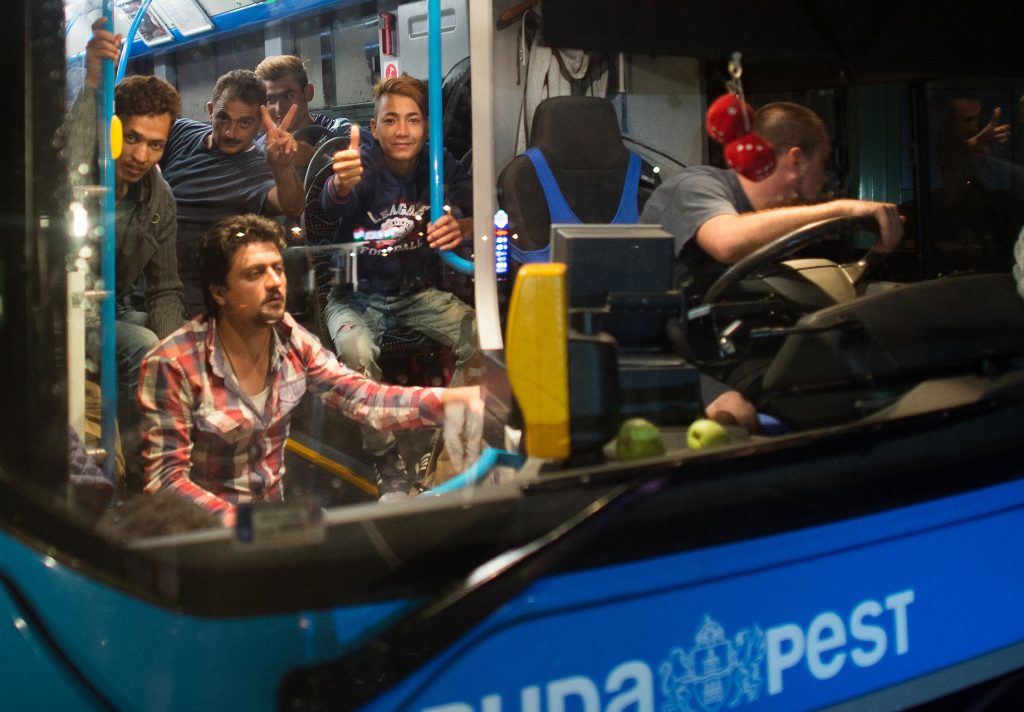
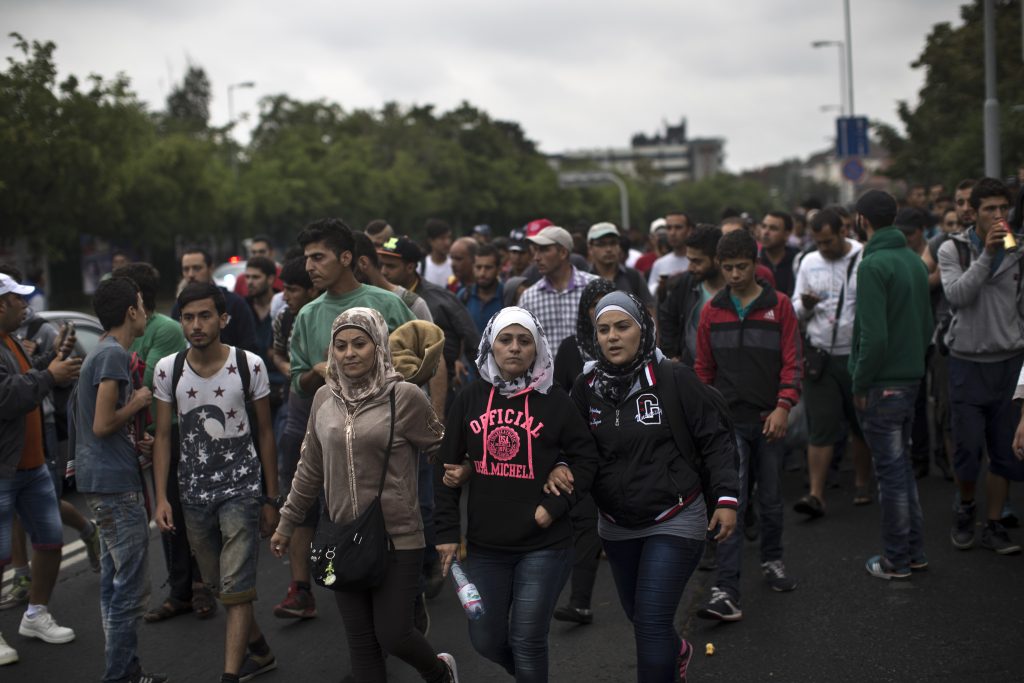
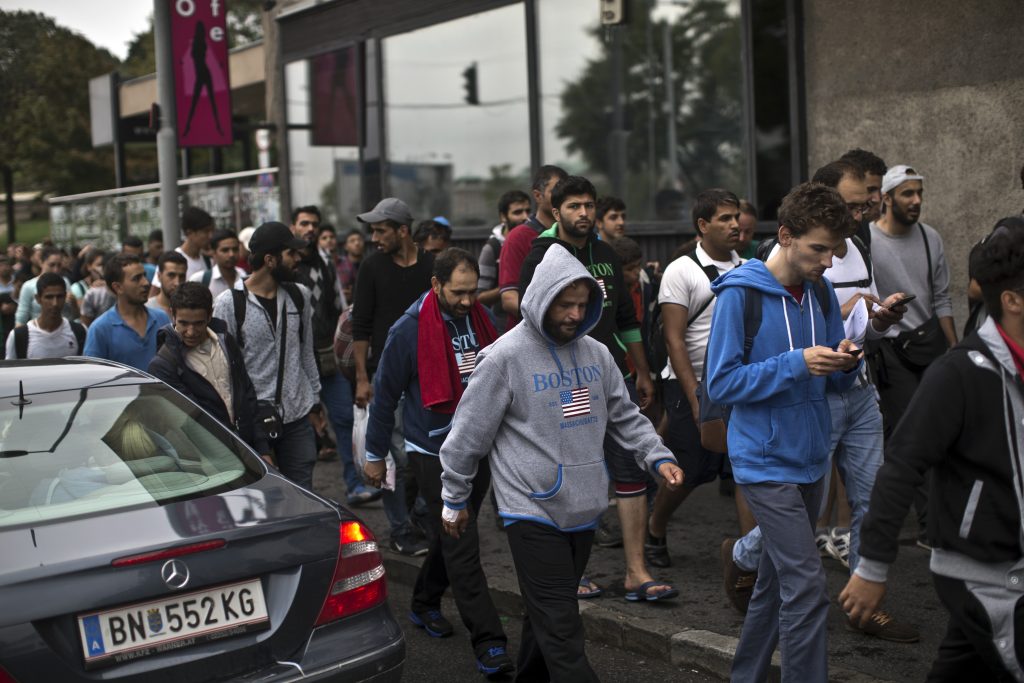
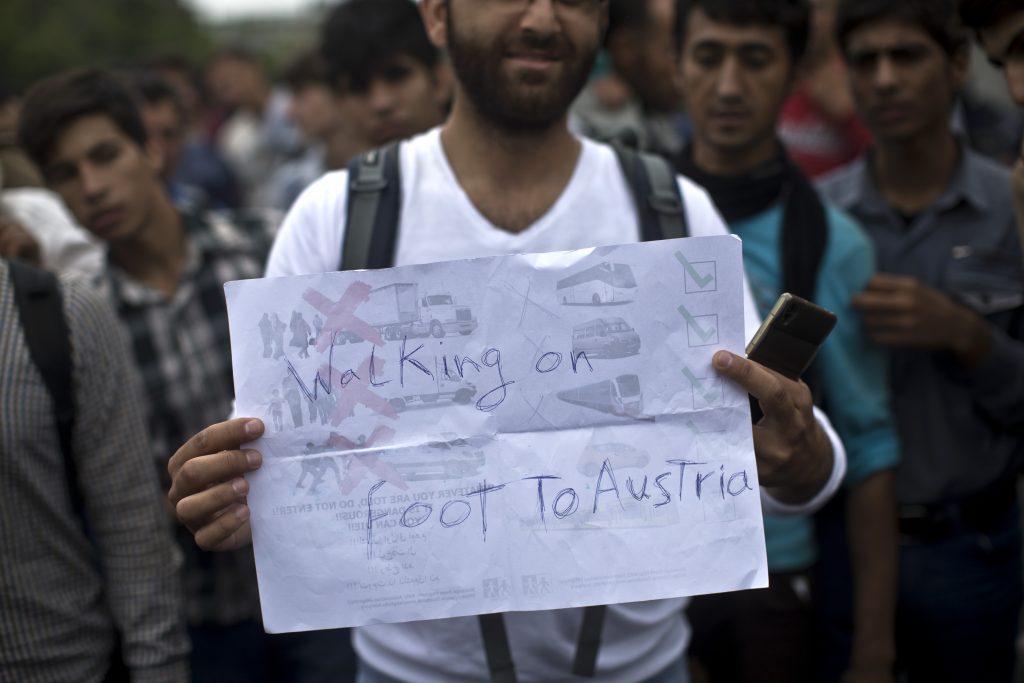
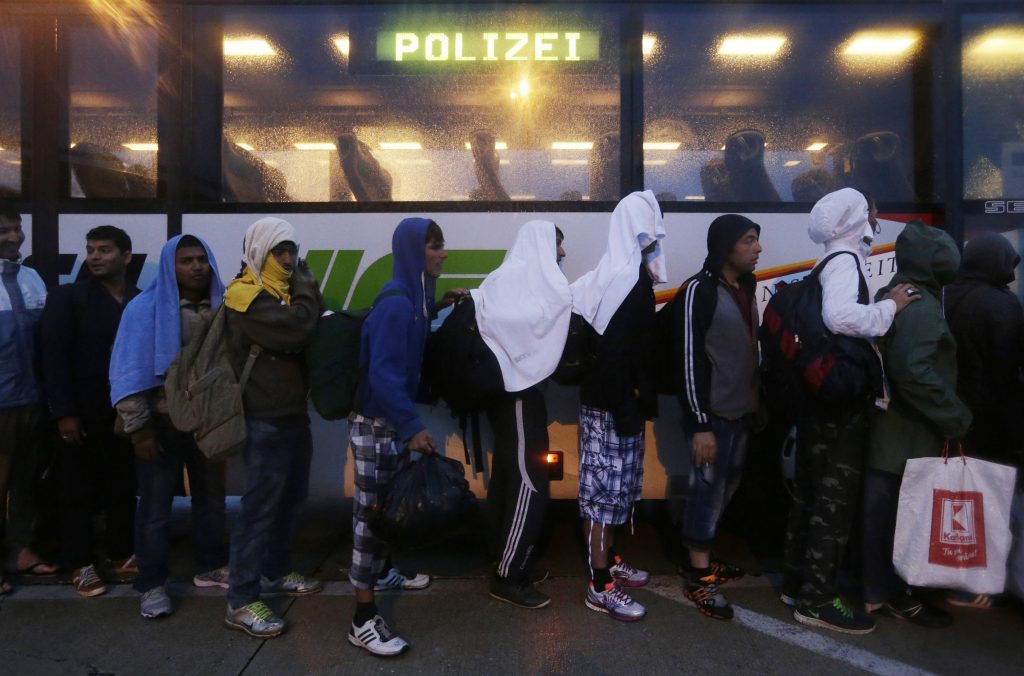
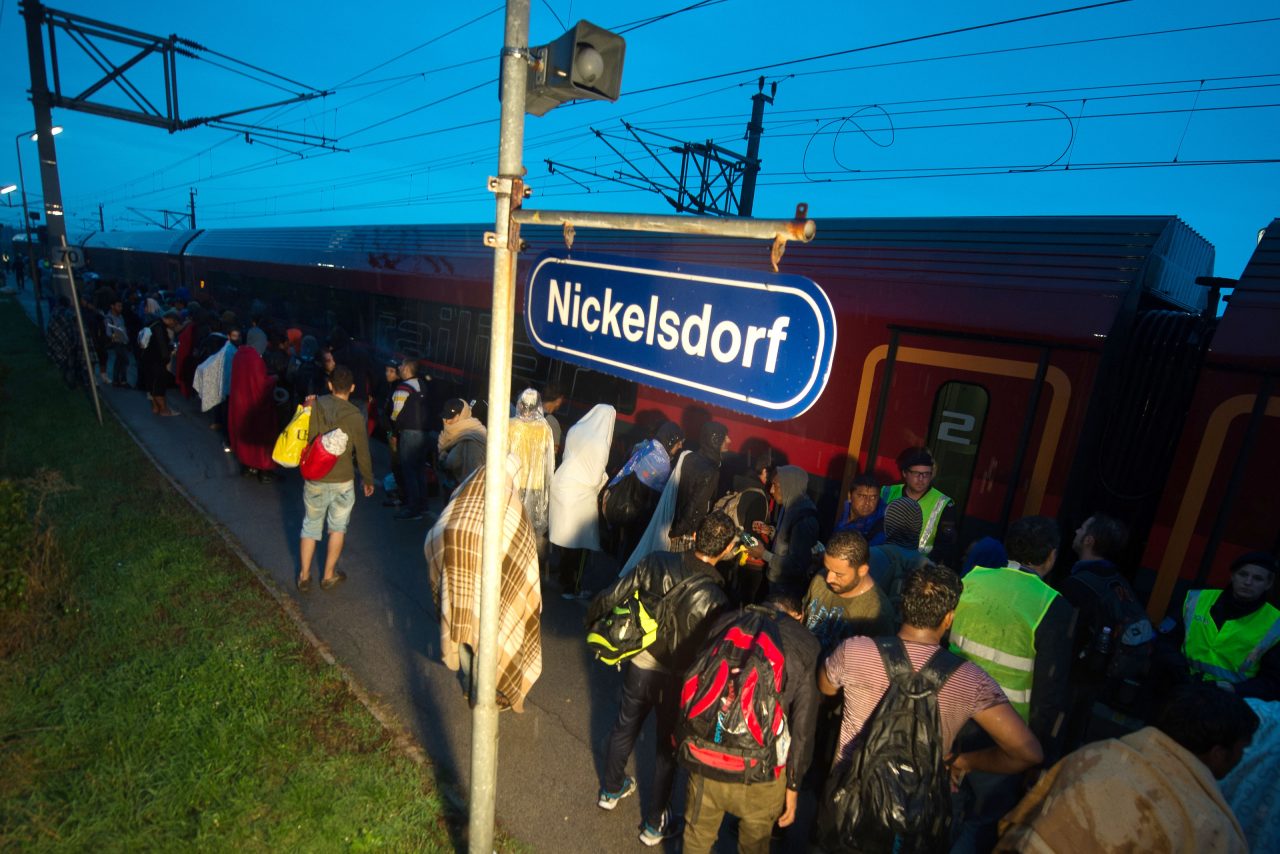
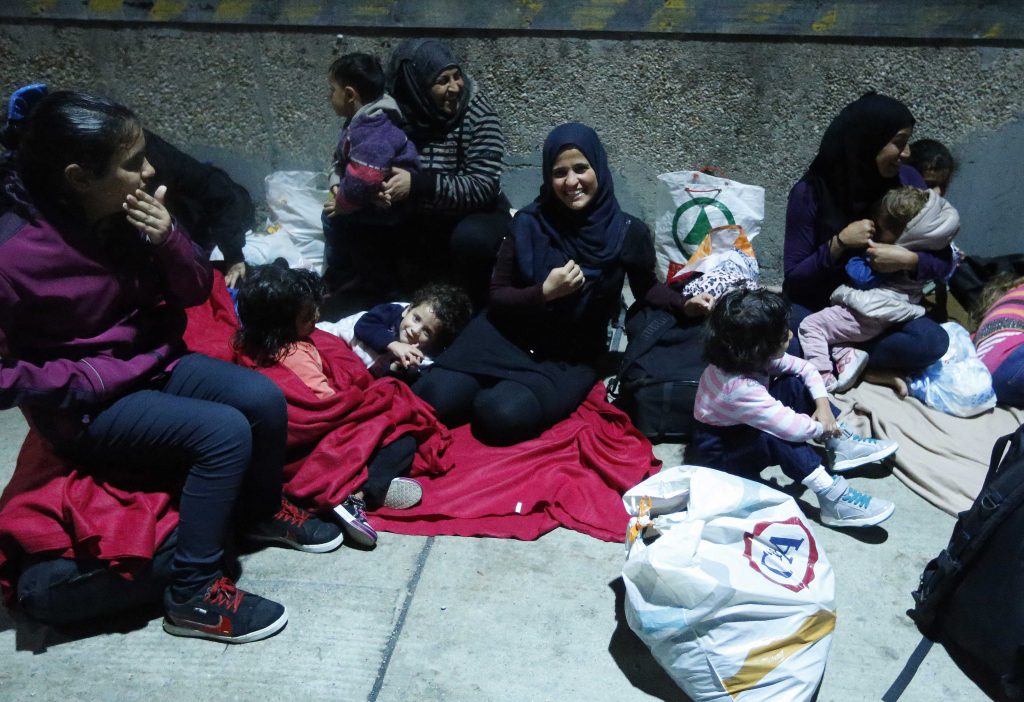
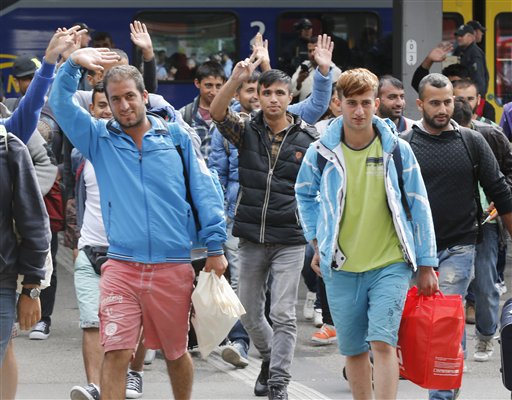

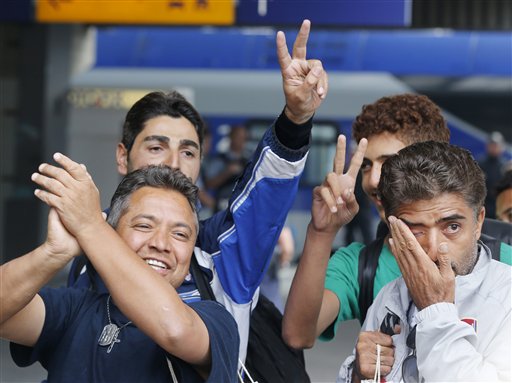
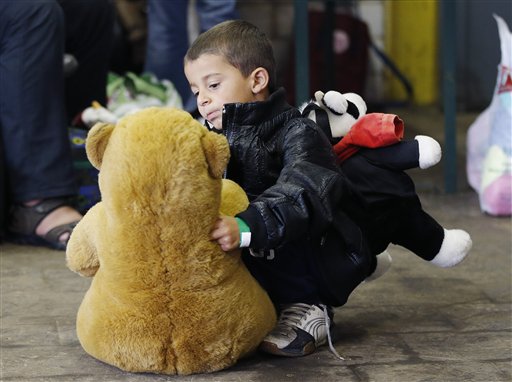
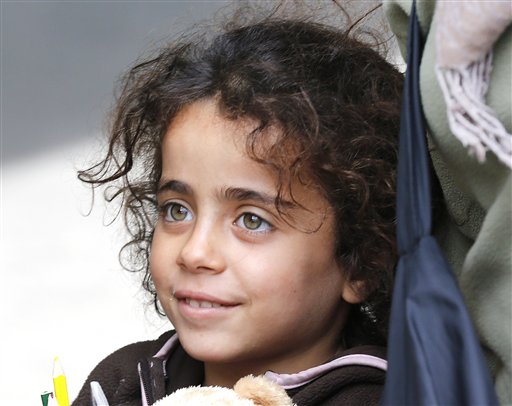
In coda per raggiungere il confine. In Ungheria la prima trance di quanti hanno accettato di salire sui bus, inizialmente non senza alcune preoccupazioni, era composta da circa 4mila persone, ma per tutta la giornata odierna è previsto il transito di molti altri pullman. Un flusso che è destinato a non fermarsi a breve. Sono un centinaio i mezzi messi a disposizione dal governo ungherese, che durante tutta la notte si sono messi in coda per raggiungere il confine austriaco, che dista circa 180 chilometri da Budapest. Erano scortati dalla polizia ungherese. Una volta lasciati al confine, i profughi hanno attraversato la frontiera a piedi, sotto una pioggia battente, a mani vuote. I più fortunati sono riusciti a ripararsi con una coperta.
I pullman. Il viaggio è stato documentato da alcuni giornalisti che hanno deciso di salire insieme ai richiedenti asilo e postare su Twitter le foto del viaggio. A bordo c’erano sia i migranti accampati nella stazione ferroviaria di Budapest in attesa che si liberasse un posto sul primo treno, sia una parte di quanti camminavano lungo l’autostrada principale verso l’Austria. Non si è trattato di pullman gran turismo, ma di bus urbani, quelli che vengono usati per gli spostamenti in città, con pochi posti a sedere. Chi è salito si è sistemato a bordo come meglio poteva. Condizioni di viaggio non ideali, ma nulla a confronto di quello affrontato da quando hanno lasciato la loro casa. Per loro, è quindi una vittoria.
Chi l’ha fatta a piedi. A Hegyeshalom, uno dei valichi tra Austria e Ungheria, è addirittura bloccata la circolazione ai cittadini normali: occorre lasciar passare tutti i pullman e cercare, piuttosto, un altro confine se si vuole passare nell’altro Paese. Al di là comunque dei bus, i migranti in viaggio sono ancora molti: l’Ungheria, infatti, ha fatto sapere che non intende far partire altri spostamenti verso l’Austria, lasciando così ancora a Budapest tanti migranti. Che, c’è da credere, non si faranno spaventare. Alcuni di loro, nei giorni scorsi, si sono addirittura messi per strada a piedi. Il racconto che fa La Stampa di quei 150 chilometri è intenso, e parla di un serpentone di umanità composto da gente di ogni età. Le strade studiate su Google Maps, i bagagli improvvisati, le maglie bianche per farsi vedere di notte a bordo strada… «Cos’altro potevamo fare?», si chiede Nabil Mamdoh, professore di 70 anni di Damasco, in marcia con diabete, caviglie gonfie e medicinali nel taschino.
GUARDA LA GALLERY (4 foto)
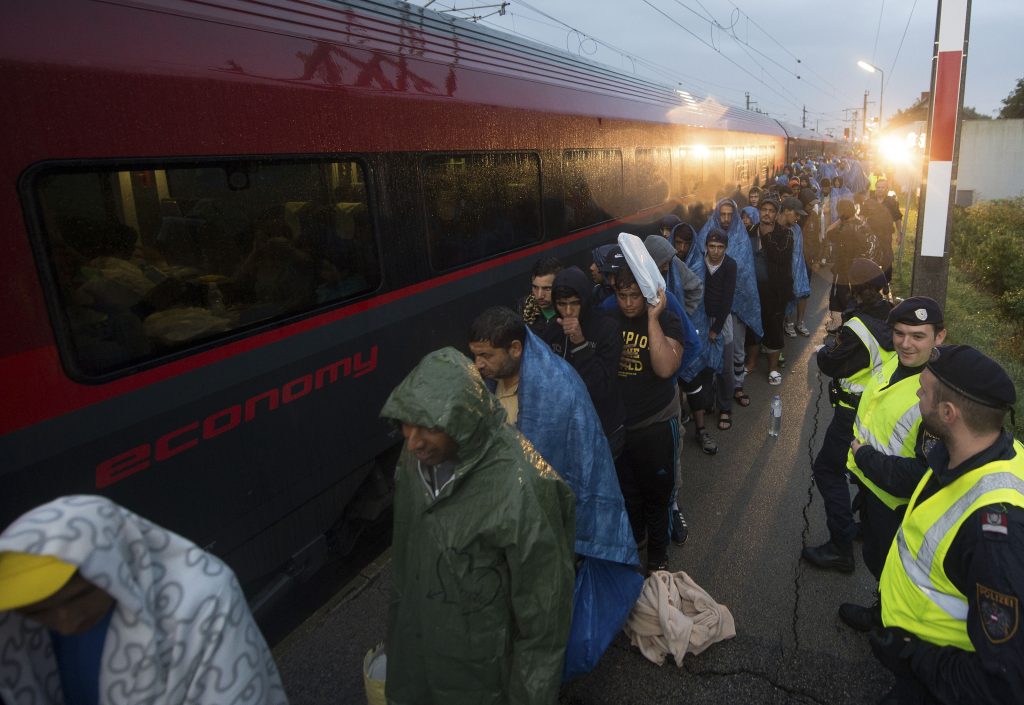
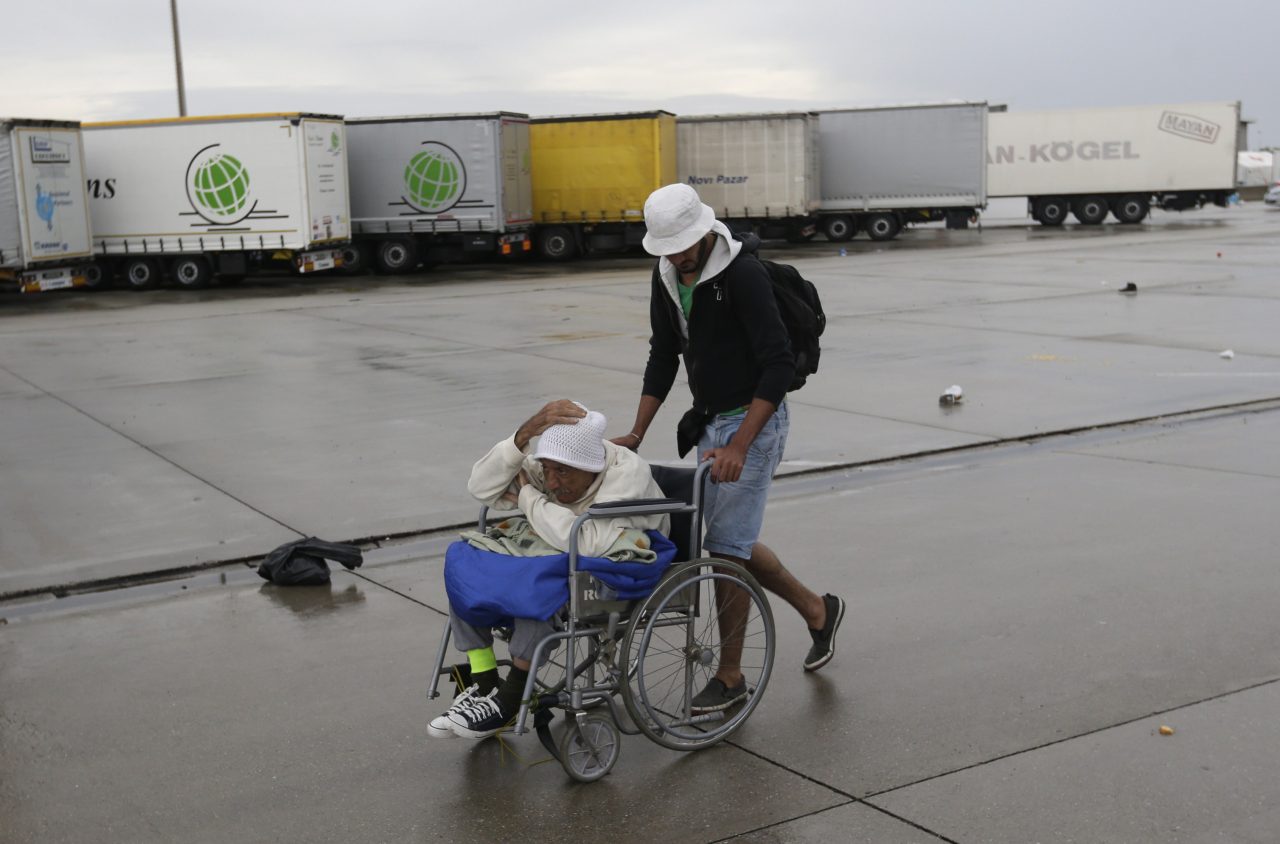
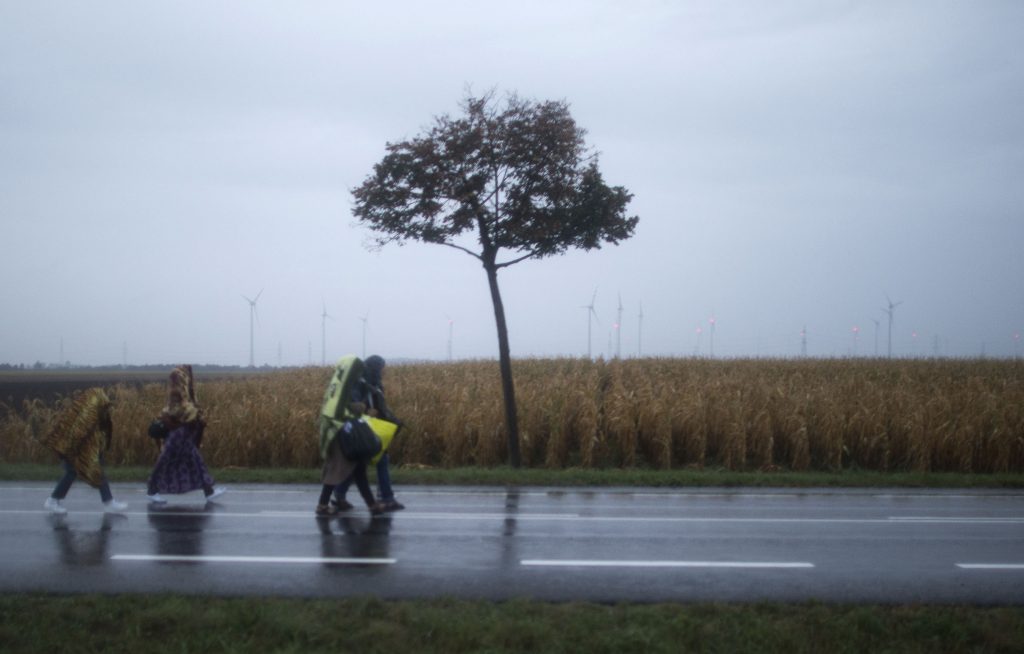
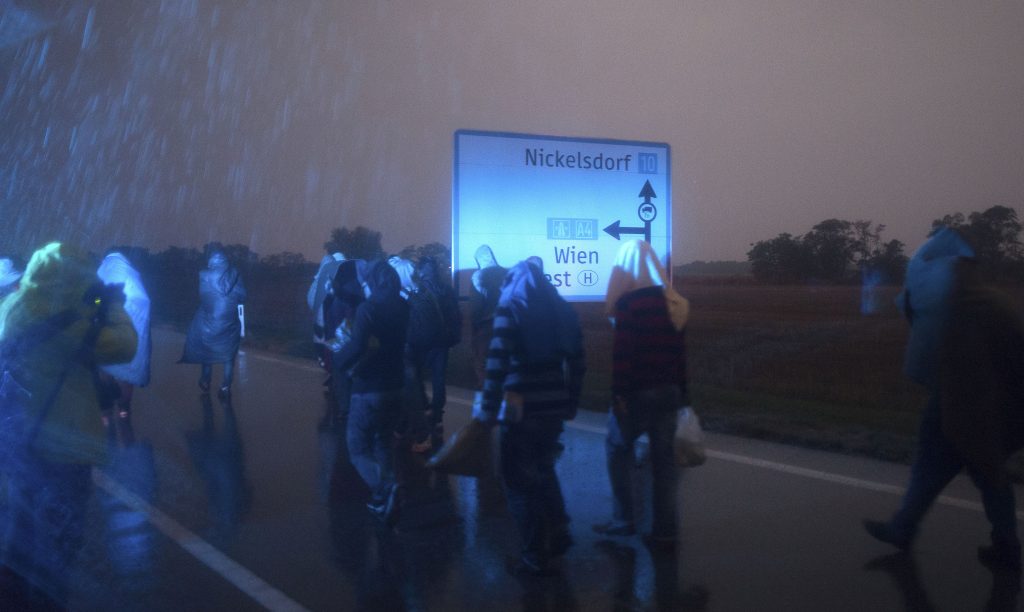
La prima accoglienza. Un primo rifugio di emergenza è stato allestito nella cittadina di Nickelsdorf, subito al di là del confine magiaro, in uno spazio attrezzato nella Nova Rock Hall, che fino a oggi era sempre e solo stato adibito ai festival musicali. Qui ad accogliere i profughi c’è un presidio della Croce Rossa di Vienna, con letti, coperte, cibo, bevande calde e cure mediche in caso di bisogno. Da qui, il viaggio dei richiedenti asilo è andato avanti. C’è chi a piedi ha raggiunto la stazione dei treni e chi invece è salito su uno dei tanti pullman messi a disposizione dal governo austriaco. Destinazione comune, Vienna. In tutto sono una ventina i bus che fanno la spola tra la capitale e il confine, con partenze ogni mezz’ora. Nella capitale austriaca sono in molti i volontari e i semplici cittadini che hanno accolto i profughi con cartelli di benvenuto.
Destinazione Germania. La maggior parte di quanti arrivano a Vienna cercano di prendere un treno per raggiungere la Germania. A Monaco di Baviera sono già arrivati i primi richiedenti asilo, e la polizia tedesca ha fatto sapere di aspettarsi almeno 10mila persone solo nella giornata di oggi.
GUARDA LA GALLERY (4 foto)
